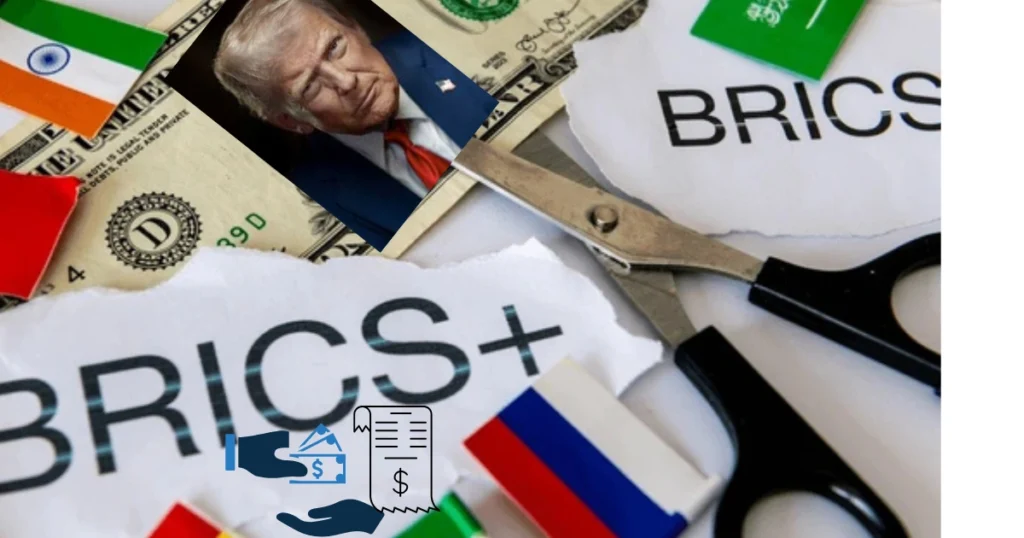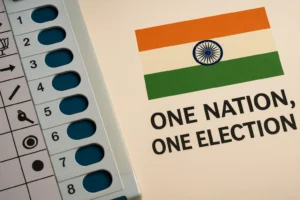BRICS Challenging the U.S. Dollar in 2025: The Quiet Shake-Up of Global Finance

Scissors cutting between BRICS and U.S. dollar symbols reflect the global financial realignment led by BRICS nations seeking to reduce dollar dependence in 2025.
By Somya Prabhat | newslyy.com
BRICS Challenging the U.S. Dollar in 2025 it is no longer a fringe prediction—it’s happening in real time, one trade deal and summit at a time.t didn’t make screaming headlines. There was no grand announcement or urgent Wall Street sell-off. But if you’ve been watching the quiet churn beneath the surface of global finance, you’ll notice something’s shifting. In 2025, BRICS challenging the U.S. dollar is no longer some think-tank speculation—it’s playing out, deal by deal, summit by summit, settlement by settlement.
And that should make us all sit up and take notice.
Table of Contents
1. A Long-Reigning King Faces a New Coalition
The U.S. dollar has reigned as the backbone of global commerce since the Second World War. It’s the currency in which oil is traded, debt is issued, and reserve coffers are filled. As of last year, about 58% of global foreign exchange reserves were still held in dollars.
But something feels different now.
The BRICS countries—Brazil, Russia, India, China, and South Africa—are no longer just calling for reform. They’re actively building financial alternatives. Last year, over a dozen bilateral trade deals were settled in local currencies rather than dollars. India and Russia are trading oil in rupees and rubles. China is pushing the yuan in its trade with Latin America and Africa. And at the 2024 Johannesburg summit, BRICS leaders dropped a quiet bombshell: they’re exploring a digital currency mechanism to sidestep the dollar altogether.
Sure, this isn’t a coup. But it’s something like slow-motion erosion—and it’s hard to ignore.
2. What’s Driving the De-Dollarization Push?
Let’s not romanticize it. The BRICS push isn’t just ideological—it’s practical.
For one, the overuse of U.S. sanctions has made the dollar feel politically risky for many emerging economies. Russia, for example, was cut off from the SWIFT system in 2022. Iran had already been there. China has seen what happens when dollar access becomes a geopolitical weapon.
Second, the Federal Reserve’s aggressive rate hikes since 2022 have made dollar debt painfully expensive for developing nations. The Global South is tired of playing by monetary rules they didn’t write. So, BRICS is attempting to rebalance the scales.
There’s also a growing appetite for financial independence. As one Indian diplomat put it last year: “If we can send a rocket to the moon, we should be able to trade without needing dollars.”
Can you argue with that?
3. BRICS Challenging the U.S. Dollar in 2025: Just Bluff or a Real Threat?
Skeptics have a point. The dollar isn’t going away anytime soon. It has a head start of nearly 80 years, not to mention the deep liquidity of U.S. capital markets, legal protections, and sheer trust.
And let’s be honest—do you see central banks rushing to replace their dollar reserves with Chinese yuan or Russian rubles?
Probably not. At least not yet.
But the real threat isn’t a total dethroning. It’s fragmentation.
Think about the way Netflix didn’t kill cable overnight, but quietly chipped away at how people watch TV. That’s what BRICS is doing to the dollar. Slowly. Regionally. Structurally.
Even the IMF has taken note. Its recent working papers mention a “multi-polar currency world” and acknowledge that regional currency blocs are on the rise.
4. The BRICS Currency Proposal: Digital, Diversified, Disruptive
One of the boldest moves on the table is a BRICS digital currency, possibly backed by a basket of gold, oil, and other reserves. This would give countries a way to conduct trade without touching U.S.-led payment systems.
According to Reuters (https://www.reuters.com/), discussions are already underway about creating a blockchain-based platform. That’s not science fiction—it’s strategic financial positioning.
And countries are lining up. As of early 2025, over 20 nations have expressed interest in joining or partnering with BRICS financial initiatives, including heavyweights like Saudi Arabia, Egypt, and Argentina.
This isn’t a club anymore. It’s a movement.
5. India’s Balancing Act
India is in a particularly intriguing position. It wants to expand trade using the rupee and support a more inclusive financial system—but it also values its strategic ties with the West.
With the Unified Payments Interface (UPI) expanding globally read our article:India UPI Global Expansion: A Powerful Fintech Revolution , India could play a key role in building BRICS financial rails. Yet, it remains cautious of any BRICS initiative that might hand too much monetary influence to China.
It’s a high-stakes balancing act. But if anyone can thread that needle, it’s a nation that’s as comfortable with Silicon Valley as it is with Shanghai.
6. So… What Happens Next?
It’s tempting to say nothing will change. That the dollar is eternal. That markets are too entrenched. But history rarely shouts before it shifts.
In the 20th century, the British pound slowly ceded its throne to the U.S. dollar—not through a crash, but through a series of crises, decisions, and recalibrations. The same could be happening now.
We’re not watching a crash. We’re watching a transfer of trust—one step at a time.
Final Thoughts: A Slow Earthquake Still Reshapes the Ground
BRICS challenging the U.S. dollar in 2025 may not mean the end of dollar supremacy. But it signals the beginning of something equally powerful: a multi-polar monetary world where choice, not coercion, defines how trade is done.As the global economy enters a period of uncertainty, the idea of BRICS challenging the U.S. dollar in 2025 no longer feels speculative—it’s already in motion. From trade settlements in local currencies to building financial infrastructure outside Western systems, the momentum is undeniable. Whether this shift results in long-term change or stalls mid-transition, one thing is clear: BRICS challenging the U.S. dollar in 2025 has become one of the defining stories in modern financial history.
And when the ground moves—even slowly—it changes the world above it.
You may also read Trump labels BRICS ‘anti-American’.






3 thoughts on “BRICS Challenging the U.S. Dollar in 2025: The Quiet Shake-Up of Global Finance”